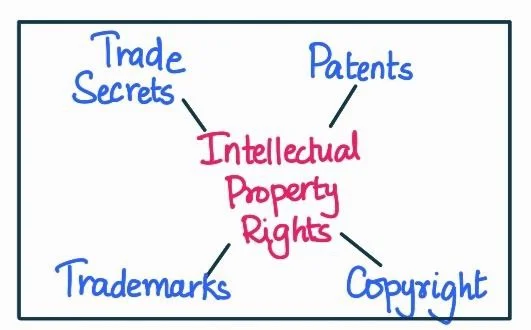Answer:
| Approach:
Introduction
- The introduction would provide a concise overview of the significance of Intellectual Property Rights (IPRs) in the context of globalization, innovation, and economic growth.
Body
- The body of the answer would be divided into three main sections:
- Copyrights: This section would provide a brief explanation of copyrights, emphasizing their role in protecting artistic and literary works.
- Patents: Focus on patents and their role in safeguarding inventions and innovative processes.
- Trade Secrets: Outline the concept of trade secrets, emphasizing their value as confidential and valuable information.
● Conclusion: The conclusion would recap the importance of Intellectual Property Rights (IPRs) in fostering innovation, creativity, and economic growth in the era of globalization. |
Introduction:
In the era of globalization, Intellectual Property Rights (IPRs) are pivotal in fostering innovation and creativity. As key constituents of IPRs, Copyrights, Patents, and Trade Secrets protect creators’ and innovators’ rights, stimulate fair competition, and propel economic growth, while often being a source of intricate legal disputes.
Body:

Copyrights:
- Copyrights pertain to artistic and literary works, including books, music, films, and software.
- Copyright grants the creator exclusive rights to reproduce, distribute, perform, and display the work publicly.
- In India, the Copyright Act 1957 governs copyright protection.
- For instance, the music industry in India often uses copyrights to prevent unauthorized use or reproduction of original compositions.
Patents:
- Patents protect inventions or innovative processes that are useful, non-obvious, and new.
- A patent grants the inventor an exclusive right to commercially exploit the invention for a certain period, generally 20 years.
- The Patents Act 1970 governs patent laws in India.
- A notable example is the patent obtained by the Council of Scientific and Industrial Research (CSIR) for the use of turmeric (curcumin) for healing wounds, thwarting attempts of biopiracy.
Trade Secrets:
- Trade Secrets involve information that has economic value from not being generally known or readily ascertainable, and is the subject of efforts to maintain its secrecy.
- Unlike patents and copyrights, trade secrets have no time limit. In India, there is no specific legislation for trade secrets.
- Companies often rely on contractual agreements to protect trade secrets.
- For example, the formula for Coca-Cola is one of the world’s most famous trade secrets.
Conclusion:
Intellectual Property Rights are of paramount importance in the globalized era, as they provide legal protection to individuals and entities for their creations and innovations, fostering a conducive environment for creativity and invention. However, they can also become a source of litigation, and thus require careful handling and robust legal frameworks.
